Emery and Rimoin’s Principles and Practice of Medical Genetics and Genomics: Foundations 7th Edition
Emery and Rimoin’s Principles and Practice of Medical Genetics and Genomics: Foundations 7th Edition:
For decades, Emery and Rimoin’s Principles and Practice of Medical Genetics and Genomics has served as the ultimate resource for clinicians integrating genetics into medical practice. With detailed coverage in contributions from over 250 of the world’s most trusted authorities in medical genetics and a series of 11 volumes available for individual sale, the Seventh Edition of this classic reference includes the latest information on seminal topics such as prenatal diagnosis, genome and exome sequencing, public health genetics, genetic counseling, and management and treatment strategies to complete its coverage of this growing field for medical students, residents, physicians, and researchers involved in the care of patients with genetic conditions. This comprehensive yet practical resource emphasizes theory and research fundamentals related to applications of medical genetics across the full spectrum of inherited disorders and applications to medicine more broadly.
This volume, Foundations, summarizes basic theories, concepts, research areas, and the history of medical genetics, providing a contextual framework for integrating genetics into medical practice. In this new edition, clinically oriented information is supported by full-color images and expanded sections on the foundations of genetic analytics, next generation sequencing, and therapeutics.
With regular advances in genomic technologies propelling precision medicine into the clinic, Emery and Rimoin’s Principles and Practice of Medical Genetics and Genomics: Seventh Edition bridges the gap between high-level molecular genetics and practical application and serves as an invaluable clinical tool for the health professionals and researchers.
Additional ISBNs:
∗ eText ISBN: 012812685X, 978-0128126851, 9780128126851
- See additional information on the Amazon.
More Details
Emery and Rimoin’s Principles and Practice of Medical Genetics and Genomics: Foundations 7th Edition:
PREFACE TO THE SEVENTH EDITION OF EMERY AND RIMOIN’S PRINCIPLES AND PRACTICE OF MEDICAL GENETICS A
PREFACE TO FOUNDATIONS
INTRODUCTIONA
1. PREFACE (STEPHEN CEDERBAUM)
2. HISTORY OF MEDICAL GENETICS1 (VICTOR A. MCKUSICK)
2.1 Preface (Peter Harper)
2.2 Introduction
2.3 Foundations of Medical Genetics Before 1956
2.3.1 Mendelism
2.3.2 Cytogenetics
2.3.3 Biochemical Genetics
2.3.4 Immunogenetics
2.3.5 Statistical, Formal, and Population Genetics
2.4 Growth and Development of Medical Genetics: 1956 to the Present
2.4.1 Chromosomology
2.4.2 Somatic Cell Genetics
2.4.3 Molecular Genetics
2.4.4 Chromosome Mapping
2.4.5 The Human Genome Project and Genomics
2.4.6 Clinical Applications of Gene Mapping
2.4.7 Evolution of Clinical Genetics
2.4.8 Clinical Armamentarium of Medical Genetics
2.4.9 A Synthesis: 1956–2001
2.4.10 Forty Years in the History of Medical Genetics
2.5 The Future
2.6 Addendum 2013 (Peter S. Harper)
2.6.1 The Founders of Clinical Genetics
2.6.2 Victor McKusick and the History of Medical Genetics
2.6.3 Preserving the History of Medical Genetics
2.7 A Timeline for Medical Genetics
3. ADDENDUM (STEPHEN D. CEDERBAUM)
3.1 Overview
3.2 Modern Medical Genetics in Practice
3.3 Reflections
CONTRIBUTOR SECTION
REFERENCES
1 – Medicine in a Genetic and Genomic Context*
1.1 INTRODUCTION: OUR HISTORY
1.2 THE PRINCIPLES OF DISEASE
1.3 DEFINING DISEASE
1.4 THE “HOW” QUESTIONS
1.4.1 Some Qualities of the Unit Step of Homeostasis
1.4.1.1 As a Unit of History
1.4.1.2 As Effectors of Gene Intention
1.4.1.3 As a Unit of Development
1.4.1.4 As a Unit of Individuality
1.4.1.5 The Unit Steps as Effectors of Disease
1.4.1.6 The Protein Product as a Unit of Selection
1.4.1.7 As a Hedge Against Genetic Determinism
1.4.1.8 As the Goal of the HGP
1.4.1.9 Social Impact
1.4.1.10 As a Source of Coherence
1.5 THE “WHY” QUESTIONS
1.5.1 Why Do We Have Disease?
1.5.1.1 Why This Disease?
1.5.1.2 Why This Person?
1.5.1.3 Why At This Time?
1.6 PREVENTION AND TREATMENT
1.6.1 Prevention
1.6.2 Treatment
1.7 CONCLUSION
REFERENCES
2 – Foundations and Application of Precision Medicine
2.1 OVERVIEW OF PRECISION MEDICINE
2.2 PRECISION MEDICINE APPLICATIONS ACROSS THE LIFESPAN AND CLINICAL SPECIALTIES
2.3 PRECISION DRUG DEVELOPMENT
2.4 PRECISION MEDICINE RESEARCH
2.5 THE PRACTICE OF PRECISION MEDICINE
2.6 CONCLUSION
REFERENCES
3 – Nature and Frequency of Genetic Disease
3.1 INTRODUCTION
3.2 FREQUENCY OF GENETIC DISEASE
3.2.1 Chromosomal Disorders
3.2.2 Single-Gene Disorders
3.2.3 Mitochondrial Disorders
3.2.4 Multifactorial Disorders
3.2.5 Somatic Cell Genetic Disorders
3.3 MORBIDITY AND MORTALITY DUE TO GENETIC DISEASE
3.3.1 Conception and Pregnancy
3.3.2 Childhood
3.3.3 Adulthood
REFERENCES
4 – Genome and Gene Structure*
4.1 INTRODUCTION: COMPOSITION OF THE NUCLEAR HUMAN GENOME
4.2 DOUBLE HELIX STRUCTURE, DNA REPLICATION, TRANSCRIPTION, AND MEIOTIC RECOMBINATION
4.2.1 Double Helix
4.2.2 Replication
4.2.3 Transcription
4.2.4 Meiotic Recombination
4.2.5 DNA and RNA Synthesis
4.3 ORGANIZATION OF GENOMIC DNA
4.3.1 Nucleosomes and Higher Order Chromatin Structure
4.3.2 Euchromatin and Heterochromatin
4.3.3 Centromeres and Telomeres
4.3.4 Repeat Content of the Human Genome
4.3.5 Gene Families
4.3.6 Interindividual Variations in the Human Genome
4.3.7 DNA Looping and TADs
4.3.8 Analysis of Genomes
4.4 STRUCTURE OF GENES (TRANSCRIPTIONAL UNITS): EXONS AND MRNA
4.4.1 Gene Expression
4.4.2 Transcription
4.4.3 Enhancers and cis-Acting Regulatory Elements
4.4.4 5′-Untranslated Sequences
4.4.5 Introns and Splice Junctions
4.4.6 3′-Untranslated Sequences and Transcriptional Termination
4.5 TRANSLATION OF RNA INTO PROTEIN
4.5.1 Genetic Code
4.5.2 Protein Synthesis
4.5.3 Protein Localization
4.5.4 Posttranslational Modification
4.5.5 Expression of Housekeeping and Tissue-Specific Genes
REFERENCES
5 – Epigenetics
5.1 INTRODUCTION
5.2 EPIGENETIC MECHANISMS: CHROMATIN, HISTONE MODIFICATIONS, DNA METHYLATION, AND LONG NONCODING RNA
5.3 EPIGENETIC REPROGRAMMING
5.4 EPIGENETIC REGULATION OF X INACTIVATION
5.4.1 Special Aspects of X Inactivation Relevant to Human Genetic Diseases
5.5 GENOMIC IMPRINTING
5.5.1 Androgenetic and Gynogenetic Tumors: Hydatidiform Moles and Ovarian Teratomas
5.5.2 Genomic Imprinting and Human Developmental Disorders
5.5.3 Diagnostic Testing and Recurrence Risk in Imprinting Disorders
5.6 GENETIC DISORDERS CAUSED BY MUTATIONS IN EPIGENES
5.6.1 Human Disorders due to Mutations in Writers of Epigenetic Marks
5.6.2 Human Disorders Due to Mutations in Erasers of Epigenetic Marks
5.6.3 Human Disorders Due to Abnormal Readers of Epigenetic Marks
5.6.4 Human Disorders Due to Mutations in Chromatin Remodelers
5.7 METHODS FOR STUDYING EPIGENETIC MARKS
5.7.1 Mapping DNA Methylation
5.7.2 Mapping Histone Modifications and Chromatin Structure
5.7.3 Epigenome-Wide Association Studies
5.8 CANCER EPIGENETICS
5.8.1 DNA Hypermethylation in Cancer
5.8.2 DNA Hypomethylation in Cancer
5.8.3 Abnormalities of Histones and Histone Modifications in Cancer
5.8.4 Aberrant miRNA and lncRNA Expression in Cancer
5.8.5 Therapies Targeting Epigenetic Modifications
5.9 ENVIRONMENTAL INFLUENCES ON THE EPIGENOME
5.9.1 Exogenous Exposures
5.9.2 Impact of Endogenous Gestational Environment and Assisted Reproductive Technologies on Epigene
5.9.3 Social Environmental Exposures and Their Impact on Epigenetic Outcomes
5.10 INTERACTIONS BETWEEN THE GENOME AND THE EPIGENOME
5.11 THE FUTURE OF EPIGENOMICS
REFERENCES
6 – Human Genomic Variants and Inherited Disease: Molecular Mechanisms and Clinical Consequences
6.1 INTRODUCTION
6.2 MOLECULAR MECHANISMS OF VARIANTS CAUSING HUMAN INHERITED DISEASE
6.2.1 “Neutral Variation”/DNA Polymorphisms
6.2.2 Nonsense SNPs
6.3 DISEASE-CAUSING VARIANTS
6.3.1 The Nature of Genomic Variants
6.3.2 Nucleotide Substitutions
6.3.3 Synonymous Nucleotide Substitutions
6.3.4 Microdeletions and Microinsertions
6.3.5 Expansion/CNV of Trinucleotide (and Other) Repeat Sequences
6.3.6 Mechanisms of Gross Genomic Rearrangement
6.3.7 Gross Deletions
6.3.8 Large Retrotranspositional Insertions
6.3.9 Large Insertion of Repetitive and Other Elements
6.3.10 Inversions
6.3.11 Duplications
6.3.12 CNV in Association With Disease
6.3.13 Gene Conversion
6.3.14 Insertion–Deletions (Indels)
6.3.15 Other Types of Complex Rearrangement
6.3.16 Multiple Simultaneous Mutations
6.3.17 Molecular Misreading
6.3.18 Germline Epimutations
6.3.19 Frequency of Disease-Producing Variants
6.3.20 Functional Characteristics of Human Disease Genes
6.3.21 Mutation/Variant Nomenclature
6.3.22 Mutations in Gene Evolution
6.4 CONSEQUENCES OF MUTATIONS
6.4.1 Variants Affecting the Amino Acid Sequence of the Predicted Protein but Not Gene Expression
6.4.2 Variants Affecting Gene Expression
6.4.3 Promoter (Transcription Regulatory) Variants
6.4.4 mRNA Splicing Mutants
6.4.5 RNA Cleavage-Polyadenylation Mutants
6.4.6 Variants in MicroRNA-Binding Sites
6.4.7 Variants in Non–Protein-Coding Genes
6.4.8 Variants in Noncoding Regions of Functional Significance
6.4.9 Cap Site Variants
6.4.10 Variants in 5′ UTRs
6.4.11 Variants in 3′ Regulatory Regions
6.4.12 Translational Initiation Codon Variants
6.4.13 Termination Codon (“Nonstop”) Variants
6.4.14 Frameshift Variants
6.4.15 Nonsense Variants
6.4.16 Unstable Protein Mutants
6.4.17 Variants in Remote Gene Regulatory Elements
6.4.18 Cellular Consequences of Trinucleotide Repeat Expansions
6.4.19 Variants That Give Rise to Inappropriate Gene Expression
6.4.20 Position Effect in Human Disorders
6.4.21 Position Effect by an Antisense RNA
6.4.22 Abnormal Proteins Due to Fusion of Two Different Genes
6.4.23 Mutations in Genes Involved in Mismatch Repair Associated With Genomic Instability in the Som
6.4.24 Comparison of Germline and Somatic Mutational Spectra
6.4.25 Mosaicism
6.4.26 Human Mutation Rates
6.4.27 Concepts of Dominance and Recessiveness in Relation to the Underlying Variants
6.4.28 Genetic Architecture of Complex Diseases
6.5 GENERAL PRINCIPLES OF GENOTYPE–PHENOTYPE CORRELATIONS
6.5.1 Variants in the Same Gene May Be Responsible for More than One Disorder
6.5.2 One Disorder May Be Caused by Variants in More than One Gene
6.5.3 One and the Same Variant May Give Rise to Different Clinical Phenotypes (“Polypheny”)
6.5.4 Variants in More than One Gene May Be Required for a Given Clinical Phenotype (Digenic Inherit
6.5.5 Different Variants in the Same Gene May Give Rise to Distinct Dominant and Recessive Forms of
6.6 WHY STUDY MUTATION?
ACKNOWLEDGMENTS
REFERENCES
7 – Genes in Families
7.1 INTRODUCTION
7.2 PEDIGREE CONSTRUCTION
7.3 UNIFACTORIAL INHERITANCE/SINGLE-GENE DISORDERS
7.4 DOMINANCE AND RECESSIVENESS
7.4.1 Definition of Dominance
7.4.1.1 Incomplete Dominance
7.4.1.2 Codominance
7.4.2 Mechanisms of Dominance
7.4.2.1 Loss-of-Function Variants
7.4.2.2 Gain-of-Function Variants
7.4.2.2.1 Increased gene dosage. This mechanism involves an excess of gene product leading to a dise
7.4.2.2.2 Ectopic or temporally altered messenger RNA expression. Genes can be expressed or turned o
7.4.2.2.3 Increased protein activity. Pathogenic variants can lead to proteins with a prolonged half
7.4.2.2.4 Dominant–negative variants. If a variant allele interferes with the wild-type allele, th
7.4.2.2.5 Toxic protein alterations. Toxic protein alterations are pathogenic variants that cause st
7.4.2.2.6 New protein functions. Some variants have been found to confer a new function on a gene pr
7.4.2.3 Recessive Variants With Dominant Effects
7.5 AUTOSOMAL DOMINANT INHERITANCE
7.5.1 Recurrence Risks
7.5.2 Penetrance
7.5.3 Expressivity
7.5.4 Anticipation
7.5.5 Sex Influence
7.5.6 Sex Limitation
7.5.7 Pleiotropy
7.5.8 Mechanisms of Reduced Penetrance and Variable Expressivity
7.5.8.1 Environmental Factors
7.5.8.2 Somatic Variants
7.5.8.3 Unstable DNA Triplet-Repeat Sequences
7.5.8.4 Genetic Background
7.5.9 New Dominant Variants
7.5.10 Gonadal or Somatic Mosaicism
7.6 AUTOSOMAL RECESSIVE INHERITANCE
7.6.1 Consanguinity
7.6.2 Recurrence Risks
7.6.3 Genetic Heterogeneity
7.6.4 Uniparental Disomy
7.6.5 New Variants
7.7 SEX-LINKED INHERITANCE
7.7.1 X-Linked Recessive Inheritance
7.7.1.1 Recurrence Risks
7.7.1.2 X Inactivation
7.7.1.3 Manifesting Female Carriers of X-Linked Recessive Disorders
7.7.1.3.1 Mechanisms of nonrandom X inactivation. A number of mechanisms can lead to nonrandom X ina
7.7.1.4 Gonadal Mosaicism
7.7.1.5 New Variants
7.7.2 X-Linked Dominant Inheritance
7.7.2.1 Recurrence Risks
7.7.2.2 X-Linked Dominant Lethal Alleles
7.7.3 Y-Linked (Holandric) Inheritance
7.8 PARTIAL SEX LINKAGE
7.9 NONTRADITIONAL INHERITANCE
7.9.1 Genomic Imprinting and Epigenetic Mechanisms
7.9.2 Digenic Inheritance
7.9.3 Mitochondrial Inheritance
7.9.4 Multiple Genetic Disorders in a Family
7.10 CHROMOSOMAL DISORDERS
7.11 POLYGENIC AND MULTIFACTORIAL INHERITANCE
7.12 ISOLATED CASES
REFERENCES
8 – Analysis of Genetic Linkage
8.1 INTRODUCTION TO LINKAGE ANALYSIS
8.2 LINKAGE ANALYSIS: BASIC CONCEPTS
8.2.1 Recombination: Biological Basis of Linkage Analysis
8.2.2 Linkage Analysis Simplified: Inbred Mouse Strains
8.2.3 Parametric Linkage Analysis: Statistical Concepts
8.2.3.1 Likelihoods, Maximum Likelihood Estimation, and Statistical Significance
8.2.3.2 LOD Scores
8.2.3.3 Modeling Traits with Penetrance Functions
8.2.3.4 Designing and Conducting Parametric Linkage Analyses
8.3 EXTENDING PARAMETRIC LINKAGE ANALYSIS
8.3.1 Incomplete Penetrance and Phenocopies
8.3.2 Genetic Heterogeneity
8.3.3 Multipoint Parametric Linkage Analysis: Location Scores
8.4 LINKAGE ANALYSIS FOR COMPLEX AND QUANTITATIVE TRAITS
8.4.1 Model-Free Linkage Analysis
8.4.2 Linkage Analysis of Quantitative Traits
8.5 LINKAGE ANALYSIS: FUTURE DIRECTIONS
REFERENCES
BIBLIOGRAPHY
9 – Chromosomal Basis of Inheritance*
9.1 INTRODUCTION
9.2 CHROMOSOME STRUCTURE
9.3 CHROMOSOMES IN CELL DIVISION
9.3.1 Mitosis
9.3.2 Meiosis
9.3.3 Spermatogenesis and Oogenesis
9.4 METHODS FOR STUDYING HUMAN CHROMOSOMES
9.4.1 Human Chromosome Identification
9.4.2 Chromosome Banding
9.4.3 Chromosome Banding Reveals Genome Sequence Organization
9.4.4 Molecular Cytogenetics
9.5 FUNCTIONAL ORGANIZATION OF CHROMOSOMES
9.5.1 The Centromere
9.5.2 The Telomere
9.6 SEX CHROMOSOMES AND SEX DETERMINATION
9.6.1 The Y Chromosome and Sex Determination
9.6.2 The X Chromosome
9.7 UNIPARENTAL DISOMY AND IMPRINTING
9.8 CHROMOSOME ABNORMALITIES
9.8.1 Numerical Chromosome Abnormalities
9.8.2 Structural Chromosome Abnormalities
9.9 CONCLUDING REMARKS
REFERENCES
10 – Mitochondrial Biology and Medicine
10.1 INTRODUCTION
10.2 MITOCHONDRIAL BIOCHEMISTRY
10.3 MITOCHONDRIAL GENETICS
10.3.1 Genetics of mtDNA Genes
10.3.2 Genetics of nDNA Mitochondrial Genes
10.4 MTDNA AND HUMAN ORIGINS
10.5 MTDNA CODED MITOCHONDRIAL DISEASES
10.5.1 Maternally Inherited mtDNA Diseases
10.5.2 Ancient Adaptive mtDNA Variants
10.5.3 Developmental and Somatic mtDNA Mutations
10.5.4 The Range of mtDNA Disease Phenotypes in MITOMAP and MITOMASTER
10.6 NDNA CODED MITOCHONDRIAL DISEASES
10.7 MITOCHONDRIAL ETIOLOGY OF COMPLEX DISEASES
10.8 DIAGNOSIS OF MITOCHONDRIAL DISEASES
10.9 METABOLIC THERAPIES OF MITOCHONDRIAL DISEASES
10.10 GENETIC THERAPIES OF MITOCHONDRIAL DISEASES
10.11 CONCLUSION
ACKNOWLEDGMENTS
REFERENCES
11 – Multifactorial Inheritance and Complex Diseases
11.1 INTRODUCTION
11.2 DETERMINING THE GENETIC COMPONENT OF A TRAIT
11.2.1 Familial Aggregation
11.2.2 Segregation Analysis
11.2.3 Linkage Analysis
11.2.3.1 Model-Based Analysis
11.2.3.2 Model-Free Linkage Analysis
11.2.4 Transmission Disequilibrium Test and Association Analysis Using Familial Data
11.3 THE INTERNATIONAL HAPMAP PROJECT
11.4 GENOME-WIDE ASSOCIATION STUDIES
11.4.1 Study Designs
11.4.2 Quality Control
11.4.3 Sex Inconsistency
11.4.4 Relatedness and Mendelian Errors
11.4.5 Batch Effects
11.4.6 Marker and Sample Genotyping Efficiency or Call Rate
11.4.7 Population Stratification
11.4.8 Marker Allele Frequency and Hardy–Weinberg Equilibrium Filter
11.5 IMPUTATION
11.6 ASSOCIATION METHODS/STATISTICAL ANALYSIS
11.6.1 Power and Sample Size Calculations
11.6.2 Discovery Phase of the Genome-Wide Association Study
11.6.3 Postanalysis Quality Control
11.6.4 Validation and Replication Phase
11.7 ANALYSIS OF RARE VARIANTS USING NEW TECHNOLOGIES
11.9 TRANSETHNIC META-ANALYSIS
11.10 OTHER DATA TYPES AND THEIR ANALYSIS METHODS
11.10.1 Gene Expression and RNA-Seq Data
11.10.2 Epigenome and Methylation Data
11.10.3 Methylation Data From Arrays
11.10.4 Proteome and Protein Data
11.10.5 Metabolome and Metabolite Data
11.11 FUTURE DIRECTIONS/INTEGRATION
11.12 CONCLUSIONS
REFERENCES
12 – Population Genetics
12.1 INTRODUCTION
12.2 HARDY–WEINBERG LAW
12.2.1 Autosomal Locus
12.2.2 X-Linked Locus
12.2.3 Two Loci
12.3 FACTORS THAT AFFECT HARDY–WEINBERG EQUILIBRIUM
12.3.1 Factors That Affect Genotype Frequencies but Not Allele Frequencies
12.3.1.1 Consanguinity and Inbreeding
12.3.1.2 Assortative Mating
12.3.1.3 Stratification
12.3.2 Factors That Affect Allele Frequencies
12.3.2.1 Random Genetic Drift
12.3.2.2 Mutation
12.3.2.3 Selection
12.3.2.4 Migration (Gene Flow)
12.4 APPLICATIONS IN POPULATION GENETICS
12.4.1 Ethnic Diversity of Rare Disease Alleles
12.4.2 Evolutionary Patterns
12.4.3 Genome Variation
12.4.4 Identification of Causal Variants for Common Diseases
REFERENCES
FURTHER READING
13 – Pathogenetics of Disease
13.1 INTRODUCTION
13.2 THE SCOPE OF ABNORMAL PHENOTYPES: SUSCEPTIBILITIES, DISEASES, AND MALFORMATIONS
13.2.1 Homeostasis
13.3 DEVELOPMENT OF ANATOMIC STRUCTURES: ANGULAR HOMEOSTASIS
13.3.1 Elaborateness of Repair
13.3.2 Life History
13.4 PATHOGENETICS OF REFINED TRAITS
13.5 PATHWAYS AND MULTIPLE-STAGE PROCESSES
13.5.1 Simple Pathways
13.5.2 Branching Pathways
13.5.3 Pathways with Feedback
13.5.4 Multiple-Hit Processes
13.5.5 Multiple-Compartment Models
13.6 MOLECULAR PATHOGENETICS
13.7 CONCLUSIONS
ACKNOWLEDGMENTS
REFERENCES
14 – Twins and Twinning
14.1 INTRODUCTION
14.2 TYPICAL TWINNING IN HUMANS
14.3 ATYPICAL TWINNING
14.3.1 Chimeric Twins
14.3.2 Mirror-Image Twins
14.3.3 Polar Body Twins
14.3.4 Vanishing Twin Syndrome
14.3.5 Superfetation
14.3.6 Superfecundation
14.3.7 Complete Hydatidiform Mole with Coexistent Twin
14.3.8 Fetus-in-Fetu
14.4 PLACENTATION
14.5 INCIDENCE OF TWINS
14.5.1 Incidence of Monozygotic Twinning
14.5.2 Incidence of DZ Twinning
14.6 SEX RATIO IN MZ TWINNING
14.7 STRUCTURAL DEFECTS IN TWINS
14.8 ZYGOSITY DETERMINATION
14.8.1 Incorrect Assumptions about Zygosity
14.8.2 The Importance of Zygosity Knowledge
14.9 THE ETIOLOGY OF TWINNING
14.9.1 Genetic Causes of MZ Twinning
14.9.2 Genetic Causes of DZ Twinning
14.9.3 Other Causes of Twinning
14.10 GENETIC AND EPIGENETIC DIFFERENCES WITHIN PAIRS OF MZ TWINS
14.10.1 Genetic Differences Within Pairs of MZ Twins
14.10.2 Epigenetic Differences Within MZ Twin Pairs
14.10.3 Nonshared Environment and Chronic Disease
14.11 TWIN RESEARCH: DESIGNS AND ANALYTIC APPROACHES
14.11.1 The “Classic Twin Design”
14.11.2 Other Types of Twin Designs
14.11.3 General Statistical Issues
14.11.4 Summary
14.12 TWIN REGISTRIES AND INTERNATIONAL COLLABORATION
14.13 CONCLUSIONS
REFERENCES
15 – The Biological Basis of Aging: Implications for Medical Genetics
15.1 INTRODUCTION
15.2 WHAT IS AGING?
15.3 WHY DO WE AGE?
15.4 HOW DO WE AGE?
15.4.1 Alterations in Proteins
15.4.2 Alterations in DNA
15.4.2.1 Nuclear DNA—Epigenetic Events
15.4.2.2 Nuclear DNA—Mutational Events
15.4.2.3 Nuclear DNA—Molecular Misreading
15.4.2.4 Telomeric DNA
15.4.2.5 Mitochondrial DNA
15.4.2.6 Germline Mutations
15.4.3 Alterations in Lipids
15.5 PROGEROID SYNDROMES OF HUMANS
15.5.1 Werner Syndrome
15.5.2 Hutchinson–Gilford Progeria Syndrome
15.5.3 MDPL Syndrome
15.5.4 Rare Genomic Instability Disorders Resulting in Segmental Progeroid Phenotypes
15.5.5 Disorders of Lipid and Carbohydrate Metabolism Resulting in Segmental Progeroid Phenotypes
15.5.6 Miscellaneous Disorders Resulting in Segmental Progeroid Phenotypes
15.6 PRO-LONGEVITY LOCI AND “ANTIGEROID” SYNDROMES
15.6.1 Dementias of the Alzheimer Type (DAT)
15.6.2 Atherosclerosis
15.6.3 Genetic Resistance to Environmental Carcinogens
15.6.4 Human Allelic Variants Homologous to Pro-Longevity Genes in Model Organisms
15.7 CONCLUSIONS AND FUTURE DIRECTIONS
REFERENCES
16 – Pharmacogenomics
16.1 INTRODUCTION
16.1.1 Types of Drug Responses
16.1.2 Adverse Drug Reactions
16.2 FUNDAMENTAL ASPECTS OF CLINICAL PHARMACOLOGY
16.2.1 Pharmacokinetics (PK) and Pharmacodynamics (PD)
16.2.2 Plasma Clearance of a Drug
16.2.3 Extrahepatic PGx Differences and Endogenous Functions
16.2.4 Therapeutic Index (or “Window”)
16.2.5 Genetics of Drug Response
16.3 HISTORY OF GENETICS RELEVANT TO PGX
16.3.1 Monogenic Traits
16.3.2 Resolution of Multifactorial Traits with Mendelian Inheritance
16.3.3 Beginning of the Genomics Era
16.3.4 Single Nucleotide Polymorphisms/Variants (SNPs, SNVs)
16.3.5 Genome-Wide Association Studies (GWAS)
16.3.6 Variance Explained Versus “Missing Heritability”
16.4 EARLY PGX EXAMPLES
16.4.1 N-Acetylation Polymorphism (NAT2 Gene)
16.4.2 Debrisoquine/Sparteine Oxidation Polymorphism (CYP2D6 Gene)
16.4.3 Thiopurine Methyltransferase Polymorphism (TPMT Gene)
16.4.4 S-Mephenytoin Polymorphism (CYP2C19 Gene)
16.4.5 Glutathione S-Transferase Polymorphisms (GST Genes)
16.4.6 UDP Glucuronosyltransferase-1A1 Polymorphism (UGT1A1 Gene)
16.4.7 Dihydropyrimidine Dehydrogenase Polymorphism (DPYD Gene)
16.4.8 Abacavir-Induced Hypersensitivity (HLA Loci)
16.4.9 Warfarin Polymorphisms (CYP2C9, VKORC1, and CYP4F2 Genes)
16.4.10 Ethnic Differences in Drug Metabolism
16.4.11 Why Might Ethnic Differences in Drug Metabolism Exist?
16.5 PHARMACOGENOMICS
16.5.1 ADRs can Be Indistinguishable From Complex Diseases
16.5.2 Genome-Wide Association Studies of ADRs
16.5.2.1 Statin-Induced Myopathy
16.5.2.2 Drug-Induced Liver Injury (DILI) and/or Hypersensitivity
16.5.2.3 Drug-Induced QT-Interval Prolongation and Osteonecrosis of the Jaw
16.5.3 Genome-Wide Association Studies of Drug Efficacy
16.5.3.1 Efficacy of Anticoagulants
16.5.3.2 Efficacy of Hepatitis C Virus Infection
16.5.3.3 Mutational Landscape of G-Protein-Coupled Receptor (GPCR) Drug Targets
16.5.4 Genome-Wide Association Studies of Complex PGx Traits
16.5.4.1 GWAS of Type II Diabetes Treatment
16.5.4.2 GWAS of Cardiovascular Disease Treatment
16.5.5 Genome-Wide Association Studies of Unsuccessful PGx Examples
16.5.5.1 GWAS Dilemma of Hypertension Treatment
16.5.5.2 GWAS Dilemma of Psychotropic Drugs
16.6 RESPONSE TO DRUGS OTHER THAN GENOTYPE OF THE PATIENT
16.6.1 Epigenetics
16.6.2 Endogenous Influences
16.6.3 Environmental Factors
16.6.4 Microbiome Differences
16.7 FDA RECOMMENDATIONS FOR PGX GENOTYPING
16.8 CONCLUSIONS
ACKNOWLEDGMENTS
REFERENCES
INDEX


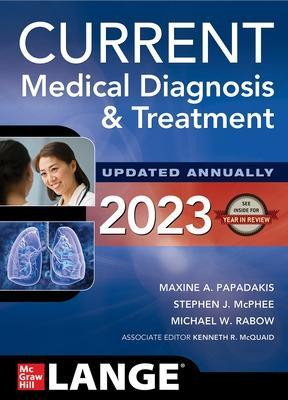
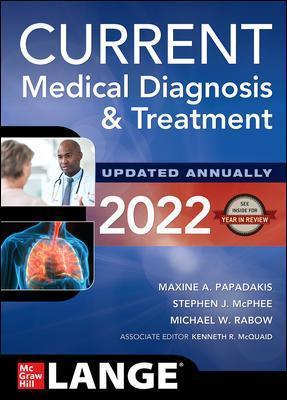
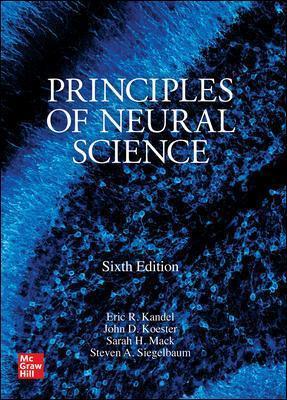





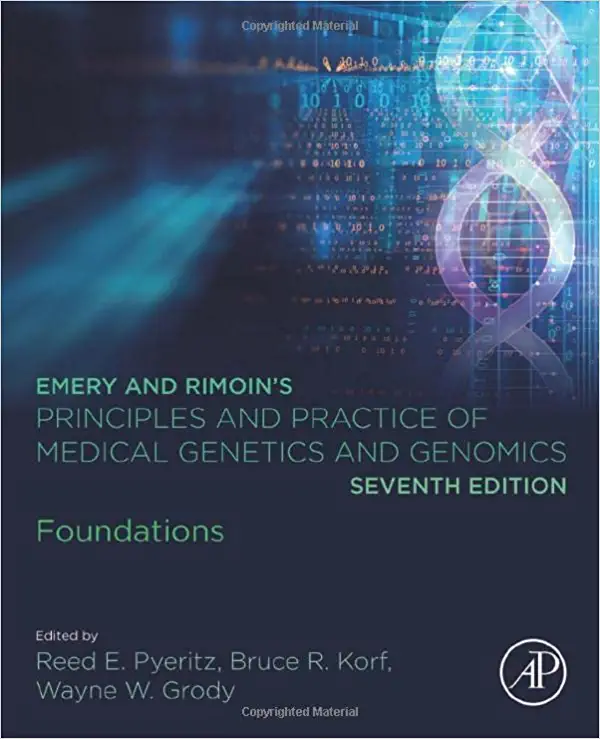





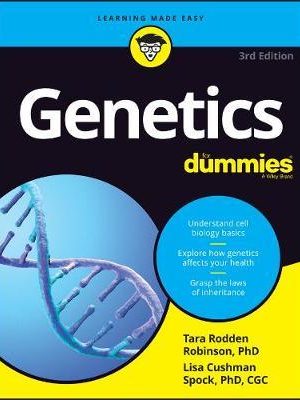

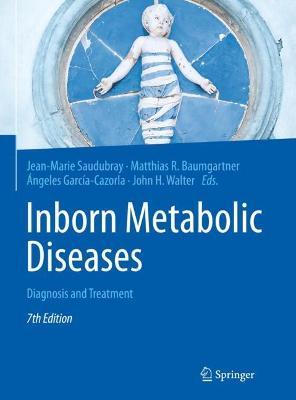



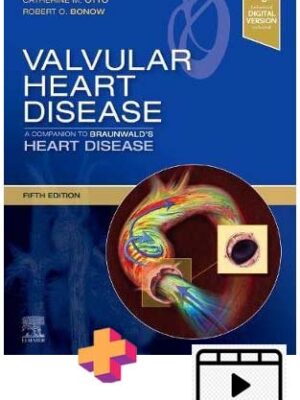
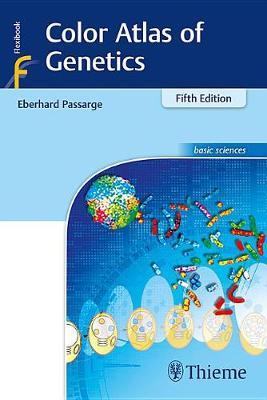
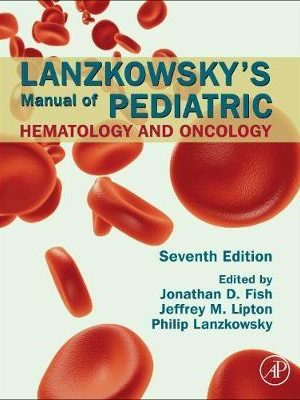

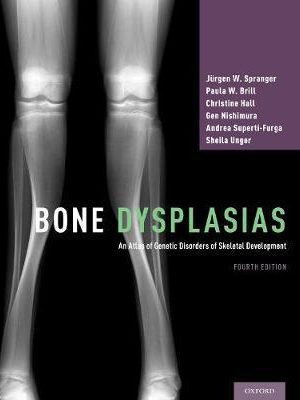

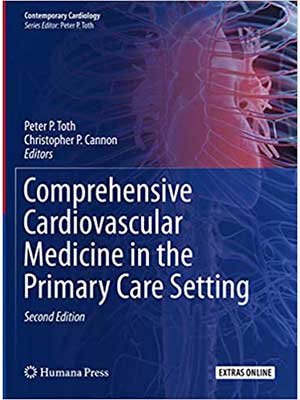
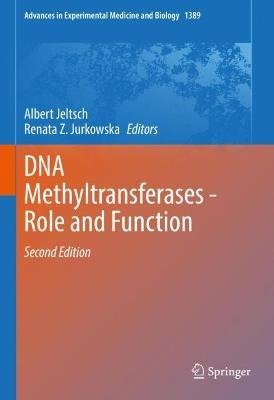
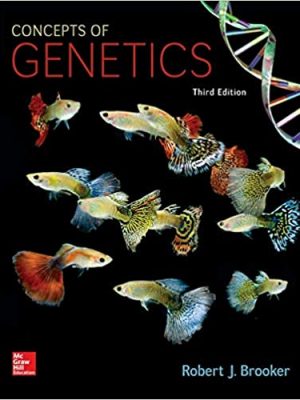
 Dentistry
Dentistry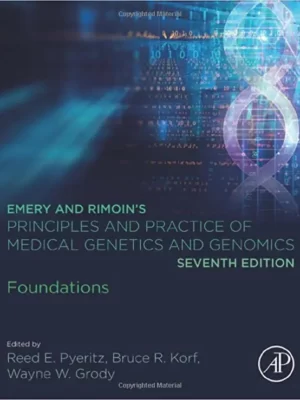
Reviews
There are no reviews yet.